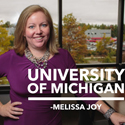
 For many, getting involved in the community and giving back is as much a gift to yourself as it is a gift to others. Over the last 15 years, my partner (is this the best word?) Kim and I really enjoy giving back to those less fortunate by helping the South Oakland Shelter. SOS is located in Lathrup Village, MI and is dedicated to helping individuals and families who have fallen on hard times. Many are temporarily homeless or out of work and need a safe place to fall and to lift themselves back up. SOS is a revolving shelter with over 50 local churches and synagogues helping to provide shelter at night, rides to work in the morning and 3 hot meals a day.
For many, getting involved in the community and giving back is as much a gift to yourself as it is a gift to others. Over the last 15 years, my partner (is this the best word?) Kim and I really enjoy giving back to those less fortunate by helping the South Oakland Shelter. SOS is located in Lathrup Village, MI and is dedicated to helping individuals and families who have fallen on hard times. Many are temporarily homeless or out of work and need a safe place to fall and to lift themselves back up. SOS is a revolving shelter with over 50 local churches and synagogues helping to provide shelter at night, rides to work in the morning and 3 hot meals a day.
This year, for our part, we cooked meals and helped people get to work. But we also helped with the annual conversion of our church, (Birmingham Unitarian Church), into living quarters for 30 guests for a week. At the end of the week, I received a card signed by all the guests, thanking us for an outstanding effort on their behalf. In my years working with SOS, I have never received a note with personal messages like this:
We truly felt at home”
“I am so grateful to have you on this portion of my journey”
“I love you BUC”
“Thanks for your precious time, I am truly grateful”
“You all were great”
We’re looking forward to partnering with SOS again in 2015.
Matthew E. Chope, CFP ® is a Partner and Financial Planner at Center for Financial Planning, Inc. Matt has been quoted in various investment professional newspapers and magazines. He is active in the community and his profession and helps local corporations and nonprofits in the areas of strategic planning and money and business management decisions. In 2012 and 2013, Matt was named to the Five Star Wealth Managers list in Detroit Hour magazine.
Five Star Award is based on advisor being credentialed as an investment advisory representative (IAR), a FINRA registered representative, a CPA or a licensed attorney, including education and professional designations, actively employed in the industry for five years, favorable regulatory and complaint history review, fulfillment of firm review based on internal firm standards, accepting new clients, one- and five-year client retention rates, non-institutional discretionary and/or non-discretionary client assets administered, number of client households served.
Links are being provided for information purposes only. Raymond James is not affiliated with and does not endorse, authorize or sponsor any of the listed web sites or their respective sponsors. Raymond James is not responsible for the content of any web site or the collection or use of information regarding any web site’s users and/or members.



















